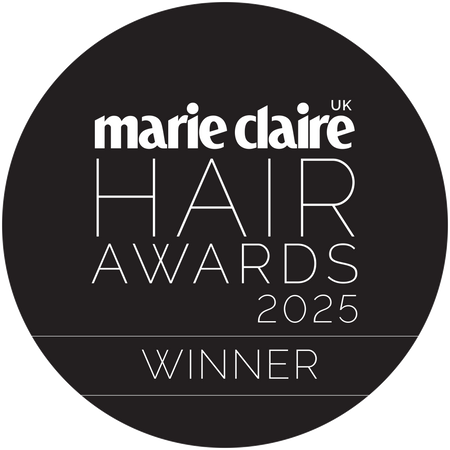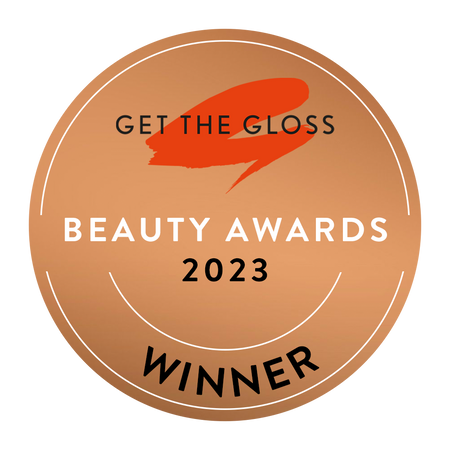Dyeing our hair has never been more popular. Research indicates that around 80% of us are reaching for the bottle, on a mission to enhance our natural hair colour! But whether you’re going for bleach or balayage, a natural hue or a bold and colourful look - looking after your dyed hair is super important.

During the hair colouring process, your cuticle is lifted, to allow the dye to penetrate the hair. Your cuticle is there to protect your hair from damage, so as soon as it's lifted your hair is immediately left feeling vulnerable. Then you’re applying colour - which is going to play with your hair’s natural pigmentation. The longer this process goes on (and we all know a big colour overhaul can mean hours sat in the stylist's chair) the more the damage is likely to occur.
But, does this mean we should give up on a hair colour glow-up? Definitely not! It just means you need to ensure you’re giving your vulnerable, coloured hair the love and attention it needs when it comes to caring for it - and Consultant Dermatologist and Hair Specialist Dr Sharon Wong is here to explain how.
Reduce how often you wash your hair
Firstly, you want to try to maintain your colour for as long as possible, so that you can keep those visits to the salon - and the damaging dyeing processes - to a minimum.
One of the simplest ways to stretch out your colour is to reduce the amount of times you wash your hair - the more you wash your hair the faster your colour will fade! Whilst you might like to start each morning with a refreshing shower, you definitely don’t need to be washing your hair on a daily basis. Depending on your hair type you should be aiming for an average of 3 times a week (if you have straight to wavy hair) or closer to once a week if you have Afro textured hair. Our advice? Invest in a shower cap and embrace hair styles that favour day old hair (or lean on the old-faithful messy bun) and you’ll soon realise that you can still look and feel great even without daily hair washes. When you do wash your hair, make sure to use tepid or warm water - washing with hot water will bring the dye out of your hair much faster.
Choose the right Shampoo
When wash day comes around - you need to think carefully about the products you’re using. It may sound like obvious advice, but you always want to use a shampoo that comes with a ‘colour safe’ label.
Not only is this going to be created with the needs of your hair type in mind, but it’s also going to reduce the amount of harmful chemicals that can cause further damage. Sulphates are one of the most common and effective ingredients used in shampoos, but used on dyed hair and they can speed up the process of losing your colour and vibrancy. Colour safe shampoos usually contain low or no sulphates and instead use milder cleansing agents that are kinder to hair and limit the rate of colour fade. Some of these shampoos also include natural conditioning agents - like coconut or argan oil - that will leave your hair feeling hydrated and healthy (as well as shiny!) It will also help lock your colour into the hair fibre - another way they can help reduce your fade time!
Condition your hair regularly
Which brings us nicely on to the importance of conditioners! Conditioning is always important for keeping our hair smooth, shiny and healthy - but it’s crucial when it comes to coloured looks.
As discussed earlier, the process of dyeing hair usually involves lifting up the cuticles from the surface. This is often done with an alkaline substance, like ammonia, to allow the dyes to penetrate the shaft of the hair. After your colour is complete, the cuticles are then closed back down with an acidic conditioner. When this is done repeatedly, your cuticle can become really damaged. One of the cuticle’s jobs is to lock water into our hair, so if it's not operating at its best, moisture is going to escape - resulting in dry, damaged hair that doesn’t look (or feel) healthy.
Conditioning your hair - with either quality products or natural conditioners like oils and butters - can help to nourish your cuticle and heal some of the damage caused by the dyeing process. They encourage the cuticle to lie flat, which has a multitude of benefits, including locking in the dye, preventing loss of hydration and also improving the softness and shine of your hair.
If you’re trying to pick the best products for dyed hair, you should also look out for conditioners with UV filters. They can provide added protection from the fading effect that UV (aka the light and energy coming from the Sun) has on coloured hair.
Use Hair Masks
If you want to give your hair some extra conditioning, a hair mask is a great thing to include in your hair care routine. This is normally recommended at least once a week for all hair types - but for coloured hair it is even more important not to skip this nourishing activity - and you should do a mask twice a week if possible. Masks can help to temporarily repair the damaged cuticle layer which is not only going to improve the general look and feel of your hair (hello, super hydration!) and make it really soft and shiny, but it will also lock in the dye and help you retain your colour for longer.
When choosing a hair mask there are a couple of things you should look out for. Masks containing hydrolysed proteins are great as they help to temporarily rebuild the cuticle layer and strengthen the hair. Humectants such as hyaluronic acid are another helpful ingredient as they help to hydrate the hair fibres. You can also go au naturel and create hair masks with products you can find in your kitchen! Oils and butters such as coconut oil, avocado, argan oil and shea butter help to coat the hair and smoothen the cuticles, improving shine and softness.
Use Heat Protection
We all know that high temperatures can be the enemy of hair health, so heat protection is an essential part of any hair care routine - especially if you’ve been mixing up your colour. Hair is 90% keratin (aka protein) and using a high heat when drying and styling can destroy these proteins, resulting in hair breakage. It can also alter the pigments in your hair and damage your cuticle even more. Expose your hair to too much heat and you’ll start to notice it looking dry, frizzy and lack lustre - all tell tale signs of unhappy hair cuticles. Because your cuticle is already likely to be damaged from the dyeing process, heat protection is a non-negotiable for coloured hair.
Heat protectants contain ingredients that coat the hair, forming a protective barrier on the surface. This shields your cuticle from some of the thermal damage and also helps to distribute the heat more evenly along the length of the hair - so it’s less intense on a specific area. Look for products that contain silicones and hydrolysed proteins - they're the most effective at protecting your delicate hair!
Consider natural air drying
Whilst heat protectants are great for shielding your hair from thermal damage, there really is no better way to reduce the heat than to limit the use of drying and styling products that rely on hot temperatures. Coloured hair tends to dry out easily - heat tools and blow dries will speed up that moisture loss and make your hair look even more parched and weathered. But is it time to ditch your hairdryer altogether? Definitely not. Air drying has lots of benefits for hair, but leaving your hair to dry completely naturally isn’t advisable. Excess water left inside the hair fibres swells the cortex of individual strands - and the longer it takes to dry, the more damage it can accumulate.
The best approach is to combine both air and blow drying to speed the process up and protect your hair. When you’ve washed your hair, squeeze out as much water as possible. Allow your hair to dry about 70% naturally and then introduce your hair dryer to finish the job speedily and style with ease. You also want to try and reduce the amount of time you spend using styling tools like straighteners and tongs - and never, ever use them on wet hair!
Check out our Ultimate Blow Dry Brush for a healthier, speedier blow-dry. The patented teeth technology and vented centre has been designed to be used with low heat to protect hair from heat damage. Top tips for a healthier blow-dry: section hair to avoid over-drying and avoid placing the nozzle of the hair dryer directly onto the teeth and hair.
Use products & tools that prevent further breakage
It’s not just drying and styling tools that you want to be aware of when it comes to protecting coloured hair. There are a bunch of products out there that can reduce damage and help your new colour shine brighter for longer.
A silk or satin pillowcase is a great investment as they are kind to cuticles, reduce surface friction and in turn keep static and frizz to a minimum - so you wake up with smooth and stylish hair! You also want to make sure you're drying your hair with a soft, fine and highly absorbent fabric. Microfiber towels are the perfect addition to your bathroom - and one your coloured hair will thank you for. When it comes to hairbrushes, Tangle Teezer has you covered. Detangling your hair is an important part of maintaining a healthy look and feel, but you want to keep friction to a minimum and reduce any further trauma to the cuticle. You want to use a hairbrush that is tough on knots but kind to vulnerable hair. The Fine and Fragile Detangler has teeth that are 30% softer - perfect for reducing breakage and smoothing that all important cuticle!
So yes, whilst dyeing your hair can cause damage, there is lots you can do to nourish and protect it. Follow these tips and you’ll have colour that stays around longer and hair that looks and feels healthier.











